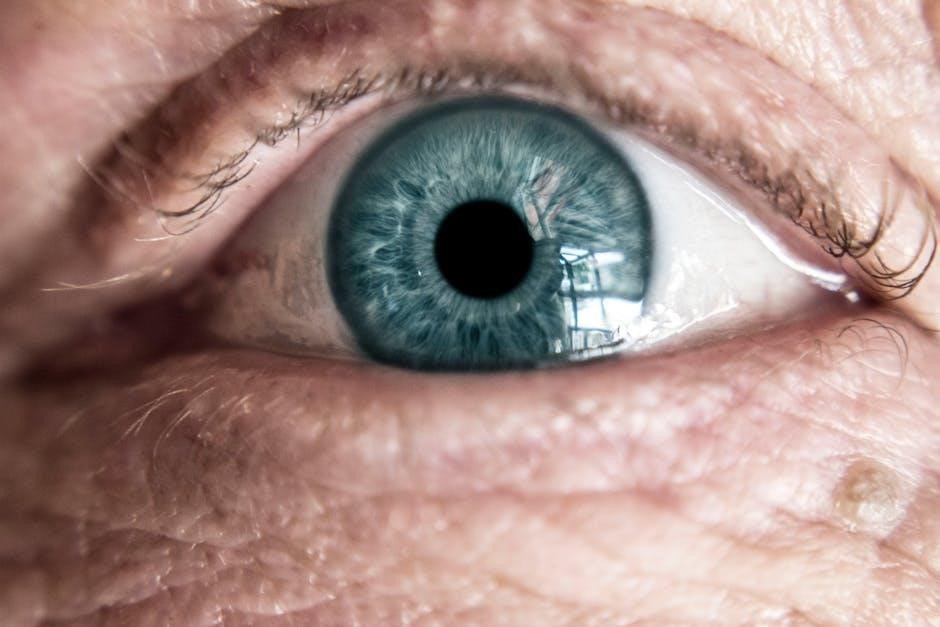The Visual Analogy Guide introduces students to human anatomy using everyday experiences and visual aids, making learning easier and more engaging with interactive diagrams and illustrations available online always helping.
Purpose of the Guide
The purpose of the Visual Analogy Guide to Human Anatomy is to provide students with a unique and effective learning tool, helping them to understand complex anatomical concepts by relating them to familiar everyday experiences. This guide aims to make learning anatomy more engaging and accessible, using visual analogies to explain difficult concepts in a clear and concise manner. The guide is designed to assist students in developing a deeper understanding of human anatomy, and to help them retain information more effectively. By using visual analogies, the guide enables students to take things they already know and apply them to anatomical structures, making learning more efficient and enjoyable. The guide is an essential resource for students enrolled in introductory anatomy courses, and is designed to support their learning and academic success. The guide’s purpose is to make anatomy more accessible and engaging for students.
Target Audience
The target audience for the Visual Analogy Guide to Human Anatomy includes students enrolled in introductory anatomy and physiology courses, particularly those in the healthcare fields. This guide is designed to support students who are new to the study of anatomy, providing them with a comprehensive and engaging learning resource. The guide is also suitable for students who are looking for a supplement to their existing coursework, or for those who need to review and refresh their knowledge of human anatomy. Additionally, the guide may be useful for educators and instructors who are teaching anatomy and physiology courses, as it provides a unique and effective teaching tool. The guide’s target audience is primarily students who are seeking to develop a strong foundation in human anatomy, and who are looking for a resource that will help them to succeed in their studies. The guide is intended to be a valuable resource for students.

Benefits of Visual Analogies
Visual analogies enhance learning and understanding of human anatomy concepts quickly and effectively always online.
Learning through Familiar Concepts

Learning through familiar concepts is a key aspect of the visual analogy guide, allowing students to connect new information to their existing knowledge and experiences. This approach facilitates a deeper understanding of human anatomy, as students can relate complex concepts to everyday objects and situations. By using visual analogies, students can take things they already know and apply them to anatomical structures and physiological concepts with which they are unfamiliar. This method of learning helps to build confidence and reduce anxiety, as students are able to grasp new ideas more easily; The visual analogy guide provides a range of interactive activities, including labeling diagrams and creating drawings, to help students engage with the material and reinforce their learning. Overall, learning through familiar concepts is an effective way to introduce students to the study of human anatomy, making it more accessible and enjoyable.
Improved Understanding of Anatomy
The visual analogy guide helps students develop a more comprehensive understanding of human anatomy, by providing a clear and concise explanation of complex concepts. The use of visual aids, such as diagrams and illustrations, enables students to visualize the relationships between different anatomical structures. This improved understanding of anatomy is essential for students to succeed in their studies, as it allows them to apply their knowledge in a practical and meaningful way. The guide’s focus on visual analogies also helps students to recognize patterns and relationships between different parts of the body, leading to a deeper understanding of how the body functions as a whole. By using this approach, students can gain a more nuanced understanding of human anatomy, and develop a strong foundation for further study and exploration. The visual analogy guide is an effective tool for students looking to improve their understanding of anatomy.

Features of the Guide
The guide includes interactive diagrams and labeling activities to enhance learning and engagement always with online resources available to support student learning and success every day.
Labeling Diagrams
The guide features a variety of labeling diagrams to help students learn and identify different anatomical structures, with each diagram carefully designed to illustrate key concepts and relationships between different parts of the human body.
The diagrams are detailed and accurate, allowing students to gain a deeper understanding of the subject matter and develop their critical thinking skills.
By labeling diagrams, students can engage with the material in a hands-on way, reinforcing their learning and improving their retention of key concepts.
The guide provides a range of diagrams for students to label, from simple illustrations of individual organs to more complex diagrams of entire systems.
This variety of diagrams helps to keep students engaged and motivated, as they work through the guide and develop their knowledge of human anatomy.
The labeling diagrams are an essential part of the guide, providing students with a unique and effective way to learn about the human body.
Creating Drawings and Coloring Illustrations
The guide encourages students to create their own drawings and color existing black-and-white illustrations to better understand human anatomy.
This interactive approach helps students to engage with the material on a deeper level, developing their observation and critical thinking skills.
By creating drawings, students can visualize the relationships between different anatomical structures and develop a more nuanced understanding of the subject matter.
The act of coloring illustrations also helps students to relax and focus, reducing stress and anxiety as they learn.
The guide provides a range of illustrations for students to color, from simple diagrams of individual cells to more complex illustrations of entire systems.
This creative approach to learning helps students to develop a more personal connection to the material, making it easier to remember and recall key concepts.
The combination of creating drawings and coloring illustrations is a unique and effective way to learn about human anatomy.

Effectiveness of the Guide
The guide is an effective study aid, helping students learn human anatomy with interactive tools and visual analogies always available online to enhance learning experiences and outcomes successfully.
Study Aid for Introductory Courses
The Visual Analogy Guide is a valuable study aid for students enrolled in introductory anatomy and physiology courses, providing a unique approach to learning complex concepts.
The guide uses visual analogies to help students understand and retain information, making it an effective tool for introductory courses.
The Visual Analogy Guide is designed to be used in conjunction with other course materials, and is an affordable and effective way to learn human anatomy and physiology.
The guide includes a variety of learning activities, such as labeling diagrams and creating drawings, to help students engage with the material and develop a deeper understanding of the subject.
The Visual Analogy Guide is an essential resource for students who are new to the study of human anatomy and physiology, and is a great way to build a strong foundation for future learning.
The guide is also a useful reference for students who are looking for a refreshing and engaging way to review and reinforce their knowledge of human anatomy and physiology.
Core Concepts Book
The Visual Analogy Guide to Human Anatomy is a core concepts book that provides students with a comprehensive understanding of human anatomy.
The book uses visual analogies to explain complex concepts, making it easier for students to understand and retain the information.
The guide covers all the core concepts of human anatomy, including the skeletal, muscular, and nervous systems.
The book is designed to be used as a primary resource for students enrolled in introductory anatomy courses.
The Visual Analogy Guide is a valuable resource for students who are looking for a clear and concise explanation of human anatomy.
The book’s visual approach to learning makes it an ideal resource for students who are visual learners.
The guide is also a useful reference for students who are looking for a comprehensive review of human anatomy.
The book’s core concepts approach makes it an essential resource for students who are looking to build a strong foundation in human anatomy.
The guide effectively concludes by summarizing key concepts and providing a lasting impression on students of human anatomy always.
Recommendation for Students
The Visual Analogy Guide to Human Anatomy is highly recommended for students enrolled in introductory anatomy courses, as it provides an effective and engaging way to learn complex concepts.
The guide uses visual analogies to help students understand and retain information, making it an invaluable resource for those struggling with traditional teaching methods.
By using everyday experiences and visual aids, the guide makes learning easier and more enjoyable, allowing students to develop a deeper understanding of human anatomy.
The guide’s interactive diagrams and illustrations also provide a unique learning experience, enabling students to explore and learn at their own pace.
Overall, the Visual Analogy Guide to Human Anatomy is an essential study aid for students looking to succeed in their anatomy courses, and its recommendation is well deserved based on its effectiveness and engaging approach to learning human anatomy concepts.
